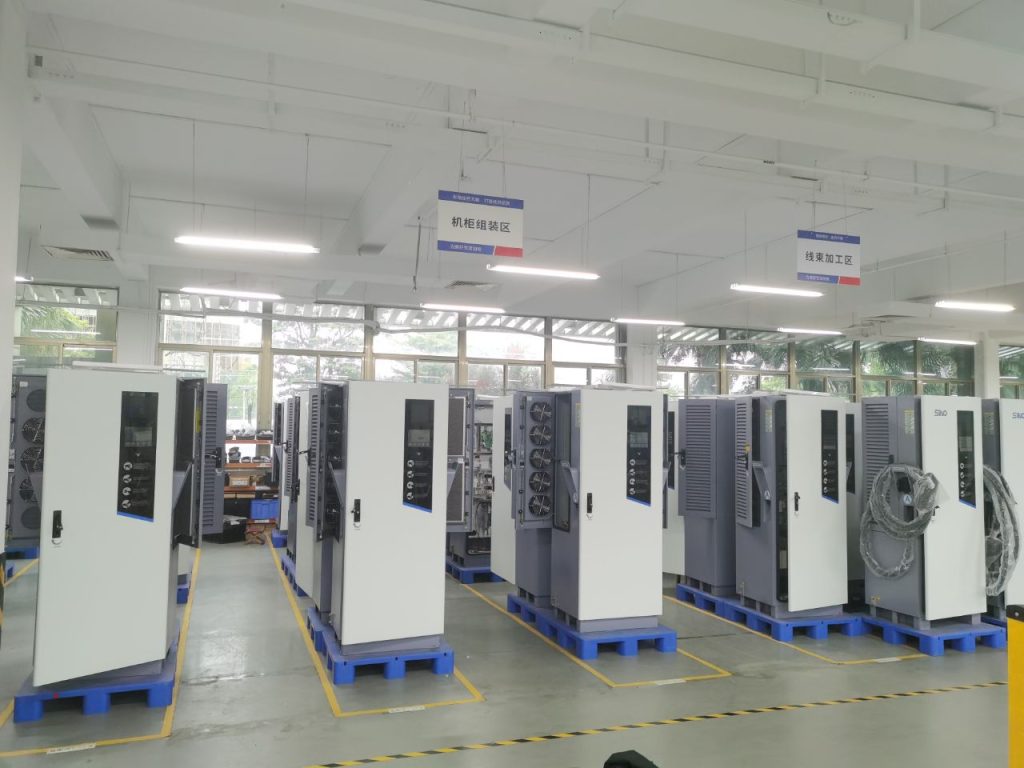
Products
Fast, Reliable, Everywhere

Solutions
Efficient, Innovative EV Charging Solutions.
News
We are committed to the innovation and application of EV charging.
Public ev charging stations are essential to the transportation infrastructure as we move towards a sustainable and environmentally friendly system. These charging stations facilitate the wider adoption of electric mobility by giving owners of electric vehicles a simple and quick way to replenish the batteries in their vehicles. By easing range anxiety and enabling drivers to recharge their cars while conducting errands or on long drives, these charging stations promote the adoption of EVs. Furthermore, as electricity is often less expensive than petrol, public charging stations help cut greenhouse gas emissions and transportation expenses.
The infrastructure that supports the broad adoption of electric vehicles—public EV charging stations—is the foundation of the electric mobility revolution. These charging stations provide a variety of features and functionalities that increase the comfort, accessibility, and sustainability of EV ownership. This blog article will discuss the essential characteristics of public ev charging stations influencing the future of transportation.
Charging Speed Options:
Different charging speeds are available at public EV charging stations, which is one of their key characteristics. Three charge levels are commonly available at charging stations:

Different charging speeds are available to accommodate different EV models and customer demands, easing range anxiety and improving the usability of electric vehicles for daily transportation.
Public charging stations provide various payment methods to simplify the charging procedure. Credit cards, smartphone applications, and RFID (Radio-Frequency Identification) cards are commonly accepted at stations. Some could even provide subscription-based programmes, giving loyal customers access to special prices or other advantages. The ability to access charging stations for a variety of users, including those with impairments, is a vital feature. Typically, stations are built to meet accessibility requirements and include elements like wheelchair-friendly positioning and accessible signage.
Modern EV charging stations frequently include network connectivity, making it possible for consumers to find and use them using mobile applications or websites. They also frequently have remote monitoring capabilities. These applications make it simpler for EV owners to schedule their charging sessions by providing real-time information regarding station availability, charging fees and expected charging times. Remote charging station administration and monitoring are also made possible via network connectivity. Operators can remotely check station health, update software, and handle problems to keep the stations operating.
Public charging stations often have many charging connectors to support various types of electric cars. Typical types of connectors include:
Public ev charging stations ensure that a broad variety of EVs may use their services by providing several connector types.
In the transition to a sustainable and electric transportation future, public ev charging stations are essential. Electric cars will keep gaining popularity as long as governments, corporations, and communities invest in boosting the infrastructure for charging them, eventually reducing emissions and supporting a cleaner, greener environment.
Location and accessibility: The optimal positioning of charging stations is essential. Public charging stations are frequently found in busy locations like shopping malls, dining establishments, and commercial districts, making it simple for EV owners to charge their cars while they do their daily routines. Additionally, long-distance travellers are catered to by charging stations located close to highways and important routes, which eases their range anxiety and encourages the use of electric vehicles for road trips.
Sustainability is a major consideration in the design of many public charging stations. They may generate power from sustainable energy sources like solar or wind turbines, which would lessen their carbon impact. Energy-saving measures, such as enhanced insulation and LED lighting, are also used in some stations. Furthermore, some charging stations provide recycling containers for properly discarding spent EV batteries or other materials, further advancing sustainability.
Public charging stations frequently provide User-Friendly interfaces and direct EV owners through the charging procedure. How to start a charging session, choose the preferred charging speed, and keep track of progress are all explained via touchscreen displays or simple directions on the charging station itself. Even for new EV users, these interfaces are intended to be simple, resulting in a smooth charging experience.
Regular maintenance is necessary to guarantee the dependability of public charging stations. Operators frequently have maintenance schedules in place to constantly check and maintain stations. This proactive strategy reduces downtime and guarantees that stations stay operational. Many charging stations now have safety measures such as automated fault detection systems and emergency shut-off valves to increase their dependability and safety.
The greatest public ev charging stations and services may be found by drivers through PIWIN. We guarantee that we'll be available for drivers at any time. We are committed to maintaining your car and ensuring you always have access to charging stations. Offers client help around the clock. To prevent technical problems from interfering with your drive, we ensure that every device is fitted correctly and is lasting. Look no further; we have the best local results for electric vehicle charging! Contact us immediately.
